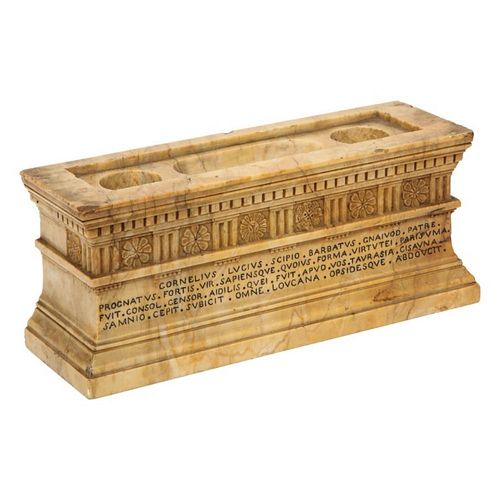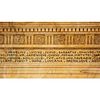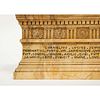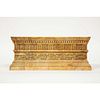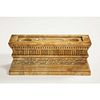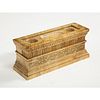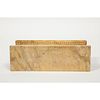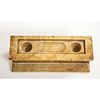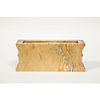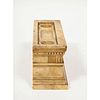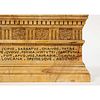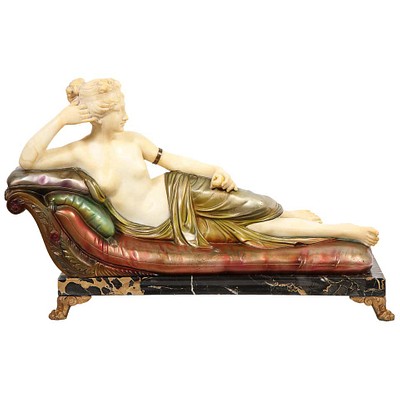Italian Neoclassical Grand Tour Sienna Marble Tomb of Scipios Inkwell
Lot 170
About Seller
Solomon Treasure
1050 2nd Ave #83
NY, NY 10022
United States
Four Generations of collecting exquisite European Art & Antiques.
Categories
About Auction
By Solomon Treasure
Oct 29, 2020 - Nov 29, 2020
Set Reminder
2020-10-29 00:00:00
2020-11-29 00:00:00
America/New_York
Bidsquare
Bidsquare : Thanksgiving Sale!
https://www.bidsquare.com/auctions/solomon-treasure/thanksgiving-sale-5936
Fall Collector Opulent Auction - No Buyers Premium! Solomon Treasure mory@solomontreasureny.com
Fall Collector Opulent Auction - No Buyers Premium! Solomon Treasure mory@solomontreasureny.com
- Lot Description
A 19th century Italian Grand Tour model of the tomb of Roman consul Lucius Cornelius Scipios Barbatus, the sarcophagus of rectangular form in carved sienna marble. Incised inscription reading: CORNELIVS.LVCIVS.SCIPIO_в„ч_П_ФBARBATVS.GNAIVOD.PATRE PROGNATVS.FORTIS.VIR.SAPIENSQVE.QVOIVS_в„ч_П_ФFORMA_в„ч_П_ФVIRTVTEI_в„ч_П_ФPARISVMA FVIT. CONSOL.CENSOR.AIDILIS.QVEI.FVIT.APVD.VOS.TAVRASIA_в„ч_П_ФCISAVNA SAMNIO.CEPIT.SVBIGIT.OMNE.LOVCANA.OPSIDESQVE.ABDOVCIT 3.5" high x 8.5" wide x 3" deep. Good overall condition, normal wear consistent with age and use. Minor chips. Very good looking, ready to place. Lucius Cornelius Scipio Barbatus (died circa 280 BC) was one of the two elected Roman consuls in 298 BC and led the Roman army to victory against the Etruscans near Volterra. A member of the noble Roman family of Scipiones, he was the father of Lucius Cornelius Scipio and Gnaeus Cornelius Scipio Asina and great-grandfather of Scipio Africanus and believed to be the founder of the Tomb of the Scipios in Rome. The sarcophagus of Lucius Cornelius Scipio Barbatus is a solid tuff burial coffin of circa 150 BC, once located in the Tomb of the Scipios in Rome and now in the Vestibolo Quadrato of the Pio-Clementine Museum in the Vatican Museum complex. The Tomb of the Scipios was discovered in 1780.Good
Condition
- Shipping Info
-
In House
-
- Payment & Auction Policies
-
Available payment options
-



 EUR
EUR CAD
CAD AUD
AUD GBP
GBP MXN
MXN HKD
HKD CNY
CNY MYR
MYR SEK
SEK SGD
SGD CHF
CHF THB
THB